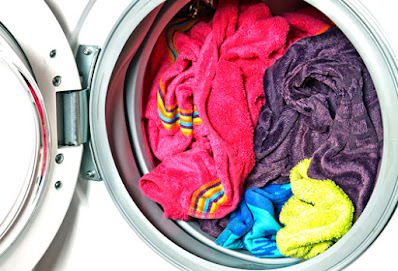FLEX MATERIAL MAY LEAD TO COOLING CLOTHES
"Many scientists are attempting to develop a material that's safe and affordable, but at the same time is efficient at heating and cooling," says co-corresponding writer Tushar Ghosh, teacher of fabrics in North Carolina Specify University's Wilson University of Fabrics.
"Carbon nanotubes, if used appropriately, are safe, and we are using a type that happens to be affordable, fairly talking. So it is possibly a more affordable thermoelectric material that could be used beside the skin."
alasan memilih one night in vegas di slot
COOLING CLOTHING
"THINK OF IT LIKE A FILM, WITH COOLING PROPERTIES ON ONE SIDE OF IT AND HEATING ON THE OTHER."
"We want to incorporate this material right into the fabric itself," says first writer Kony Chatterjee, a PhD trainee. "Today, the research right into clothes that can control temperature level focuses greatly on incorporating stiff products right into fabrics, and industrial wearable thermoelectric devices on the {pasar} aren't versatile either."
To cool the wearer, Chatterjee says, CNTs have residential or commercial homes that would certainly permit heat to be attracted far from the {bodi} when an {eksternal} resource of present is used.
"Think about it such as a movie, with cooling residential or commercial homes on one side of it and heating on the various other," Ghosh says.
The scientists measured the material's ability to conduct electrical power, as well as its thermal conductivity, or how easily heat goes through the material.
Among the greatest searchings for was that the material has fairly reduced thermal conductivity—meaning heat would certainly not travel back to the wearer easily after leaving the {bodi} in purchase to cool it. That also means that if the material were used to warm the wearer, the heat would certainly travel with a present towards the {bodi} and not pass back bent on the atmosphere.
The scientists functioned with with the laboratory of co-corresponding writer Jun Liu, an aide teacher of mechanical and aerospace design, to accurately measure the material's thermal conductivity. The scientists used an unique speculative {desain|model} to more accurately measure the material's thermal conductivity in the instructions that the electrical present is moving within the material.
"IF WE COULD GET THE THERMOSTAT DOWN A DEGREE OR TWO, THAT COULD SAVE A TREMENDOUS AMOUNT OF ENERGY."
"You need to measure each {properti} parallel to give you a sensible estimate of the material's abilities," says Liu. "This wasn't an easy task; it was very challenging, but we developed a {metode|prosedur|sistem|mode} to measure this, particularly for slim versatile movies."
The research {tim|kubu} also measured the ability of the material to produce electrical power using a distinction in temperature level, or thermal gradient, in between 2 atmospheres. Scientists say that they could take benefit of this for heating, cooling, or to power small electronic devices.
SIMPLE SOLUTION
Liu says that while these thermoelectric residential or commercial homes were important, it was also key that they found a material that was also versatile, stable in air, and fairly {sederhana|simpel} to earn.
"The {poin} of this paper isn't that we accomplished the best thermoelectric {perform}nce," Liu says. "We accomplished something that can be used as a versatile, digital, soft material that is easy to produce. It is easy to prepare this material, and easy to accomplish these residential or commercial homes."
Eventually, their vision for the {proyek} is to {desain|model} a wise fabric that can heat and cool the wearer, together with power harvesting. They think that a wise garment could help in reducing power consumption.
"Rather than heating or cooling an entire home or {ruang}, you would certainly heat or cool the {individual|pribadi|individu} {ruang} about the {bodi}," Ghosh says. "If we could obtain the thermostat down a level or more, that could conserve a remarkable quantity of power."


